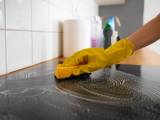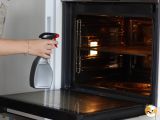Why mold appears in your kitchen without you noticing it and what to do to prevent it before it becomes a problem

Although at first glance it may seem that everything is clean, mold may be growing quietly in some corners of your kitchen. It doesn't always leave visible stains or give off an odor from the start, and that's exactly why it often goes unnoticed until it has already made a niche for itself. What many people don't know is that it doesn't have to get to that point. There are very simple ways to prevent it from appearing, without obsessing over it or filling the house with aggressive products. It is just a matter of paying attention to certain details, adopting some basic routines and understanding why the kitchen is such a favorable environment for this unwanted guest to settle in. In this article we focus on just that: how to prevent its appearance before it becomes a problem. Because when it comes to mold, the key is not just to clean it... but not to give it a chance.
What is mold and why does it appear in the kitchen?
Mold is a microscopic fungus that reproduces by spores. It needs only three things to grow: moisture, some food and oxygen. The kitchen, as you can imagine, offers this menu on a daily basis. Water, leftover food, poorly ventilated corners... A perfect environment.
Not all mold is dangerous, but some can cause allergic reactions, aggravate respiratory problems or contaminate food. That's why it's best to leave no room for it.
Places where mold hides (and we don't always look)
Unlike lime or grease, mold usually grows silently. It does not smell bad at first or leave obvious stains. It appears where you least expect it:
- Refrigerator gaskets: moisture accumulates on the gaskets and they are rarely cleaned.
- The dishwasher: even if the water is hot, the constant humidity is ideal for certain fungi to thrive.
- The coffee maker: if it is not regularly disassembled and cleaned, it accumulates internal humidity.
- Cloths and sponges: especially if they are left damp and not aired. According to some studies, they can harbor more microbes than the toilet seat.
- The corners of base cabinets: where there may be small leaks that are not noticed until there are black spots.
- Forgotten fruits, breads or cheeses: sometimes mold starts on the inside, unseen from the outside.
Tips to prevent mold in the home
Avoiding mold and mildew does not require miracle products or disinfecting every now and then. It's just a matter of keeping moisture under control and having some simple routines:
- Dry surfaces thoroughly: after cooking or scrubbing, dry countertops, the sink and sink corners.
- Ventilate the kitchen daily: opening the window for at least 10 minutes helps reduce condensation.
- Wash and air rags: it is not enough to rinse them. Let them hang to dry and change them frequently. The same goes for cloths.
- Clean the refrigerator rubber bands: once a week, wipe them with soap and water or white vinegar.
- Do not accumulate dirty containers: a badly closed jam jar or a lid with leftovers can be a source of spores.
- Check the joints and corners of the dishwasher or coffee machine: dismantle them if possible and dry them well after use.
- Freeze or consume in time: berries, soft cheeses and fresh breads are especially sensitive to mold.
And you, has it happened to you?
Mold is part of the environment and, in small quantities, does not pose a serious risk. But when it settles in the kitchen, it is advisable to act with common sense, maintain good habits and, above all, do not leave it free ground. And you, has it surprised you in some unexpected corner? Tell us your experience: among all the stories, we are sure you will find useful ideas to prevent it without complication.
You may also be interested in:
[article: 5574]
 Patricia González
Patricia González

Comments